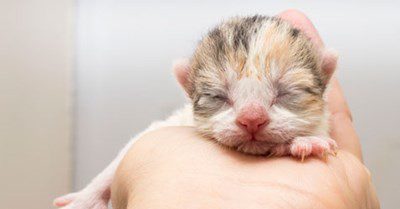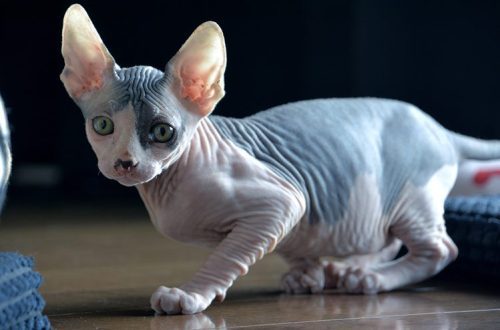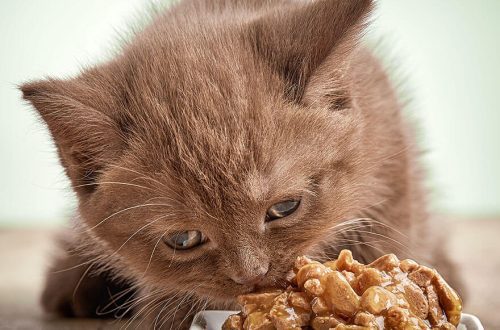
Kittens after birth
In the early days, people should not touch the kittens with their hands, because the cat may refuse them – stop feeding. In the first month, you need to observe from the outside how the kittens gain weight and develop.
Contents
First week of life
Kittens are born without hearing or sight, with thin hair, brittle bones and poor thermoregulation, so they are in dire need of a mother to keep them warm. The first day after birth, the cat surrounds the offspring with her body and practically does not leave her permanent place. And when she makes small absences, the kittens try to huddle together, closer to each other.
By the way, the sense of smell in kittens is developed from birth, and therefore they can smell their mother from the first days of life. They are born weighing no more than 100 g, and up to 10 cm long. Every day, the kitten should add 10–20 g.
At first, kittens sleep and eat almost all the time, cannot go to the toilet on their own and are not able to stand on their paws, crawling around the cat. On the third day, the kittens lose their umbilical cord, and on the fifth day they have a hearing, although they still cannot determine the source of the sound.
Second week of life
The kitten already weighs twice as much as at birth, and its eyes open – however, they are bluish-cloudy and covered with a film. For this reason, the pet can only distinguish the outlines of objects. It is possible to understand that the kitten has a weak, but vision, by the fact that the eyelids began to move apart and the eyes became visible in the crack.
The coat becomes thicker, the undercoat appears, and the kitten no longer needs to be warmed as much as in the first days of life. But the baby still needs to stay close to mom in a warm box or on a bed. The kitten cannot walk yet and continues to crawl.
third week of life
The pet continues to actively gain weight, its vision is improving, although it is still weak, therefore, while crawling, it can stumble upon objects. He is not yet able to determine the distance to objects, since his binocular vision is not developed. Right now he is making his first attempts to get out of the couch in which he lives. During this period, the first milk teeth begin to erupt in him, and this happens without obvious symptoms.
Fourth week of life
At this stage of development, the baby should already have milk teeth, which is why it’s time to introduce complementary foods and water into his diet. At this age, the kitten can walk independently, although it does not yet move too fast. He is already playing with other kittens from the litter and is starting to learn from his mother.
At this time, next to the litter on which the kittens live, you can put a tray so that the kids begin to get used to it. Their bones have become stronger, and kittens can already be picked up, played with and stroked, that is, to carry out simple manipulations for their socialization and getting used to a person. In addition, this is the right time for deworming.
Fifth week of life
The kitten can be transferred to kitten food. The cat is almost no longer feeding offspring, but she still has milk at night. The kittens still sleep for a long time, but they are already playing and moving around the room with might and main, so family members should carefully look under their feet so as not to accidentally step on them.
The eyes take on a natural shade characteristic of the breed. The undercoat also grows, and the pattern on the coat becomes clear. At this age, kittens are often already separated from their mother, but it is advisable to wait a couple more weeks so that they learn more skills from her that will certainly be useful to them in adulthood.





